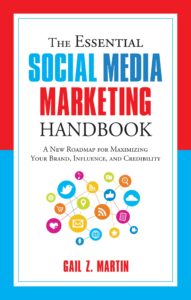Thanks to Facebook CEO Sheryl Sandberg, the headlines have revisited one of my least favorite memories of the 1990s—the “mommy wars.”
Back in the 1990s, when Nirvana was climbing the charts and Wolf Blitzer was the “scud stud” of the first Iraq war, pundits prattled on about the so-called “mommy wars” between working moms and stay-at-home moms. It was a take-no-prisoners battle that left everyone with battle wounds. After twenty some years, I thought we might have reached a truce.
Then comes Sheryl Sandberg’s new book, “Lean In: Women, Work and the Will to Lead”, and it reminded me that we’ve still got some battles to fight. And as I thought about it, I realized how my views on being a working mom were formed long before I was an adult—sitting in front of my living room TV.
Do you remember Lucille Ball? Whether you saw the re-runs of “I Love Lucy” or “Here’s Lucy” or “The Lucy Show”, she was a fixture on TV throughout the 1960s and 1970s. And while some of the early episodes now appear quaint in their fixed gender roles, (“Lucy, you’ve got some ‘splainin’ to do!), I remember how in her later shows, she played Lucy Charmichael (and later, Lucy Carter), a single working mom facing all kinds of workplace dilemmas. I laughed at her problems with Mr. Mooney, her demanding boss, but oddly enough, more than a decade later, Mr. Mooney could have sat down for a cocktail with Dabney Coleman’s despicable boss character in the movie “9 to 5” and they would have been soul mates. Things hadn’t changed all that much.
Lucy’s characters overcame workplace discrimination, overly demanding bosses, and people who underestimated her abilities, all while juggling the demands of motherhood. And what did I, as an impressionable youngster, take away from that? I learned that the workplace wasn’t a friendly place for women (especially mothers), but that humor, persistence and a good network of friends could get you through anything.
Fast forward to the 1980s, when actress Bonnie Franklin played Ann Romano, taking it “One Day at a Time.” The workplace hadn’t gotten any friendlier for women, or mothers, but now women at least had a broader variety of jobs in which they could deal with the vicissitudes of life. Where Lucy was a secretary and then worked in an employment agency run by a family member, Ann was an account executive at an ad agency—a step up toward management.
Ann Romano tackled much more serious issues than Lucy Charmicael, including divorce, suicide and harassment. Where Lucy had coquettish humor and an old-school tendency to be sneaky, Ann had attitude and a willingness to take things head-on, but she still fell back on the loyal support of family and friends. I learned that it still wasn’t smooth going for women (or mothers), and that there were times when humor wasn’t enough and you had to take a stand.
Which is why I find the reactions to the new “Lean In” book by Sheryl Sandberg so interesting. The book appears to mean something different to everyone who reads it, depending on where the reader is in her career and what cultural baggage each reader is dragging along with her. Sadly, some of the workplace situations (non family-friendly company policies) are ones that Lucy and Ann might have recognized, while others (too few women on corporate boards of directors) are what Twitter would deem “first world problems”—in other words, problems that you have once you’ve reached a fairly high level of advancement. Interestingly, Sandberg’s prescription is for women to “lean in” and invest themselves in creating change rather than fleeing the corporate world.
Funny, but I think Lucy and Ann—and those of us who had mothers in the post-War period who worked outside the home—already knew a lot about “leaning.” Here’s what Lucille Ball said: Luck? I don’t know anything about luck. I’ve never banked on it and I’m afraid of people who do. Luck to me is something else: Hard work – and realizing what is opportunity and what isn’t.”
What does this have to do with marketing? I believe that today’s under-40 workers, having grown up with moms like Ann Romano, and having seen their struggle, want more from their work life. That’s especially true for workers in their 20s and 30s, who are among the most entrepreneurial young workers we’ve seen a long time. To keep them, you’ve got to create a workplace where “leaning in” is expected and rewarded, and where trust, appreciation and flexibility combine to create a balance that is both productive and human-friendly. Workplace culture still has a long way to go on that point, but for the companies that do a good job, such a culture becomes a potent marketing factor.
And in the meantime, we’ll keep trying to find the balance and get it right—one day at a time.







